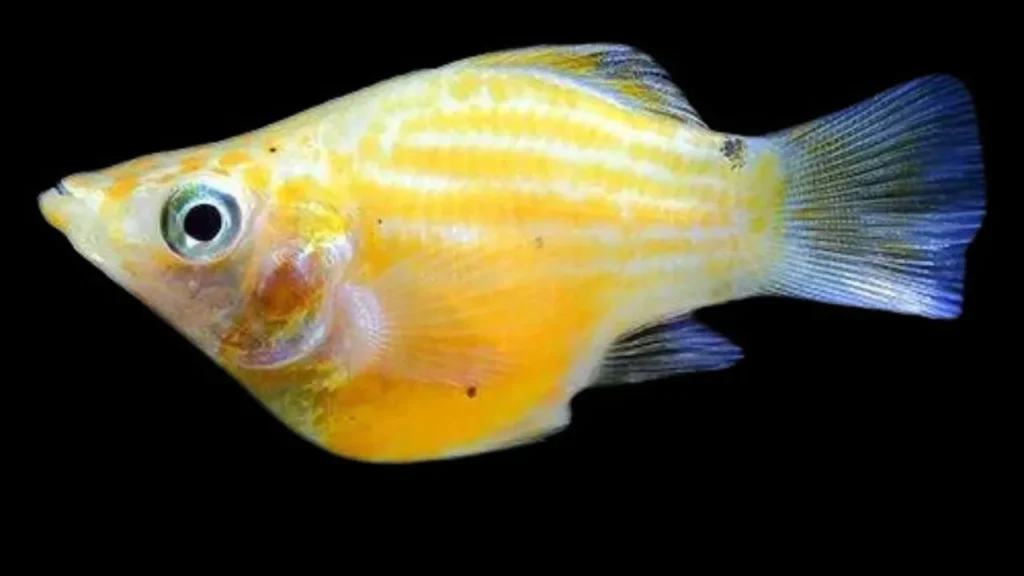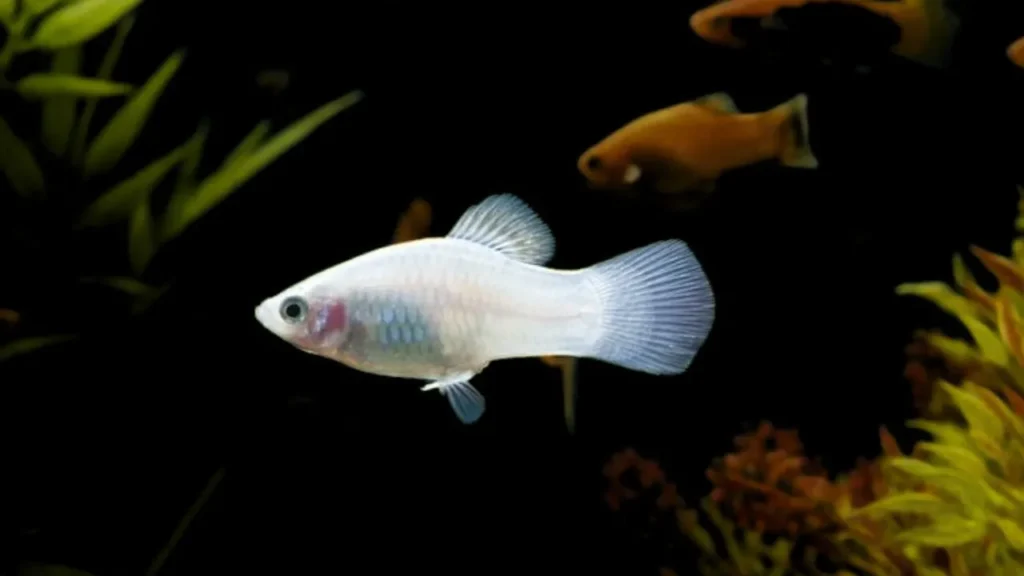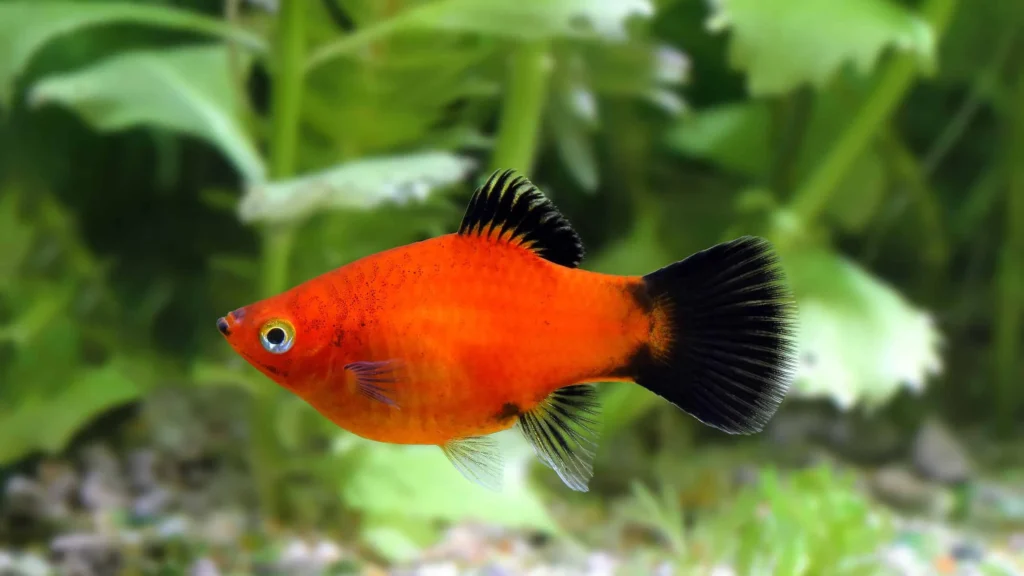If you’re new to the world of aquarium fish, you may have come across mollies and platies and wondered what the difference is between these two popular livebearers. At first glance, they can appear quite similar, leading many beginners to assume they are essentially the same fish. However, there are distinct differences between mollies and platies that every aquarium enthusiast should understand.
In this comprehensive guide, we’ll dive deep into the similarities and differences between these two species, exploring their appearance, behavior, care requirements, and compatibility. Whether you’re setting up a new tank or simply curious about these lively fish, this article will provide you with all the information you need to make an informed decision.
Appearance: Spotting the Differences
One of the most noticeable similarities between mollies and platies is their body shape. Both species belong to the Poeciliidae family and share a compact, elongated body form. However, upon closer inspection, you’ll notice some key distinctions in their physical characteristics.
Mollies (Poecilia sphenops) are generally larger than platies, with males typically reaching up to 4 inches (10 cm) in length, while females can grow up to 6 inches (15 cm). Their bodies are more rounded and stockier compared to platies. Additionally, mollies often exhibit a distinctive sailfin on their backs, particularly in males.

Platies (Xiphophorus maculatus), on the other hand, are slightly smaller, with males averaging around 2.5 inches (6 cm) and females reaching up to 3.5 inches (9 cm). Their bodies are more slender and streamlined, and their dorsal fins are not as pronounced as those of mollies.

In terms of coloration, both species offer a wide array of vibrant hues and patterns. Mollies can be found in shades of black, white, gold, and even calico patterns, while platies often feature a combination of orange, yellow, red, and black markings. However, it’s worth noting that selective breeding has produced countless color variations in both species, making it possible to find mollies and platies in virtually every color imaginable.
Also Read: What Fish Can Live With Mollies.
Behavior and Compatibility
While mollies and platies share some behavioral traits, there are also notable differences in their temperaments and social dynamics. Understanding these nuances is crucial for maintaining a harmonious aquarium environment.
Mollies are generally considered more peaceful and less aggressive than their platy counterparts. They tend to coexist well with other community fish of similar size and temperament. However, it’s important to note that male mollies can become territorial and exhibit aggressive behavior towards each other, especially when there are limited hiding spots or during breeding periods.
Platies, on the other hand, are known for their lively and energetic nature. They are active swimmers and may exhibit some fin-nipping or chasing behavior, particularly among males. While generally peaceful, platies can become more aggressive when kept in overcrowded conditions or when other fish intrude on their established territories.
When it comes to compatibility, both mollies and platies can make excellent additions to a well-balanced community aquarium. They can coexist with other peaceful species, such as tetras, rasboras, corydoras catfish, and certain gouramis. However, it’s essential to avoid housing them with aggressive or territorial fish that may bully or harass them.
Care Requirements: Keeping Mollies and Platies Healthy
While mollies and platies share some basic care requirements, there are a few key differences to consider when it comes to maintaining their optimal health and well-being.

Water Parameters:
- Mollies: Prefer slightly brackish water conditions with a specific gravity ranging from 1.005 to 1.015. They thrive in water temperatures between 72°F to 82°F (22°C to 28°C) and a pH range of 7.0 to 8.5.
- Platies: Can adapt to a wide range of water conditions, but generally prefer neutral to slightly alkaline water with a pH between 7.0 and 8.2. They do best in temperatures ranging from 72°F to 78°F (22°C to 26°C).
Feeding:
- Both mollies and platies are omnivorous and will accept a varied diet consisting of high-quality flakes, pellets, frozen or freeze-dried foods, and occasional live or frozen foods like brine shrimp or bloodworms.
- Platies may be slightly more herbivorous than mollies, so it’s a good idea to supplement their diet with vegetable-based foods like blanched spinach or zucchini.
Tank Size and Setup:
- Mollies: Require a minimum tank size of 20 gallons (75 liters) for a small group, with additional space needed for larger groups or when kept with other compatible species.
- Platies: Can be kept in smaller tanks, with a 10-gallon (38-liter) aquarium being suitable for a small group. However, larger tanks are always preferred for better water quality and swimming space.
- Both species appreciate live plants and decorations that provide hiding spots and break up line-of-sight territories.
By understanding and catering to these specific care requirements, you can ensure that your mollies and platies thrive and exhibit their vibrant colors and lively personalities.
Can Platy And Molly Breed Together?

One of the most frequently asked questions among aquarium hobbyists is whether mollies and platies can interbreed. The answer is a resounding yes – these two species are capable of producing viable hybrids.
While mollies and platies belong to different genera (Poecilia and Xiphophorus, respectively), they are closely related enough to interbreed successfully. However, it’s important to note that these hybrids, often referred to as “mollies” or “platies,” are typically infertile and cannot reproduce further.
If you plan to keep both mollies and platies in the same aquarium, it’s essential to be prepared for the possibility of hybridization. This can result in uncontrolled population growth and potentially overcrowded tank conditions if not managed properly.
To prevent unwanted breeding between mollies and platies, it’s recommended to keep only one species or ensure that all individuals are of the same sex. Alternatively, you can separate males and females into different tanks to maintain control over breeding.
Also Read:
Mollies And Swordtails. A Comprehensive Guide.
Betta And Mollies In Same Tank.
FAQs
Which fish is better for a beginner aquarist, mollies or platies?
Both mollies and platies can make excellent choices for beginner aquarists, as they are generally hardy and adaptable. However, mollies may be slightly more suitable for beginners due to their larger size, more peaceful nature, and tolerance for a wider range of water conditions.
Do mollies and platies have similar care requirements?
While mollies and platies share some basic care needs, such as a varied diet and suitable tank decorations, there are differences in their water parameter preferences, tank size requirements, and potential aggression levels. It’s essential to research and cater to their specific needs to ensure their optimal health and well-being.
What are the ideal water parameters for keeping mollies and platies together?
Mollies prefer slightly brackish water conditions with a specific gravity range of 1.005 to 1.015, a pH between 7.0 and 8.5, and temperatures between 72°F to 82°F (22°C to 28°C). Platies are more adaptable but generally thrive in neutral to slightly alkaline water with a pH of 7.0 to 8.2 and temperatures ranging from 72°F to 78°F (22°C to 26°C).
Can mollies and platies live together in the same aquarium?
Mollies and platies can generally coexist in the same aquarium, but it’s essential to provide adequate space and hiding spots to prevent aggression and territorial behaviors. It’s also crucial to manage their breeding to avoid overcrowding issues if you don’t want them to hybridize.
What is the main difference between molly and platy?
The primary differences between mollies and platies include their size, body shape, and fin structures. Mollies are generally larger, with a more rounded and stocky body, often featuring a prominent sailfin on their backs. Platies, on the other hand, are smaller and more slender, with less pronounced dorsal fins.
Are platies and mollies the same fish?
No, platies (Xiphophorus maculatus) and mollies (Poecilia sphenops) are not the same fish. While they belong to the same family (Poeciliidae) and share some similarities, they are distinct species with noticeable differences in appearance, behavior, and care requirements.
Conclusion: Making the Right Choice
In conclusion, while mollies and platies share some similarities, they are distinct species with unique characteristics and requirements. Whether you choose to keep one or both in your aquarium, it’s essential to understand their differences in appearance, behavior, breeding potential, and care needs.
If you’re a beginner looking for a hardy, peaceful, and visually appealing fish, mollies may be an excellent choice. Their larger size and more docile nature make them a great addition to community tanks. However, if you prefer a more active and energetic fish, platies could be the perfect fit, adding a splash of color and movement to your aquarium.
Ultimately, the decision between mollies and platies (or perhaps keeping both!) comes down to your personal preferences, tank setup, and the overall dynamic you wish to create within your underwater world. By researching and understanding the nuances of these two species, you can make an informed decision that ensures a harmonious and thriving aquatic environment for years to come.

